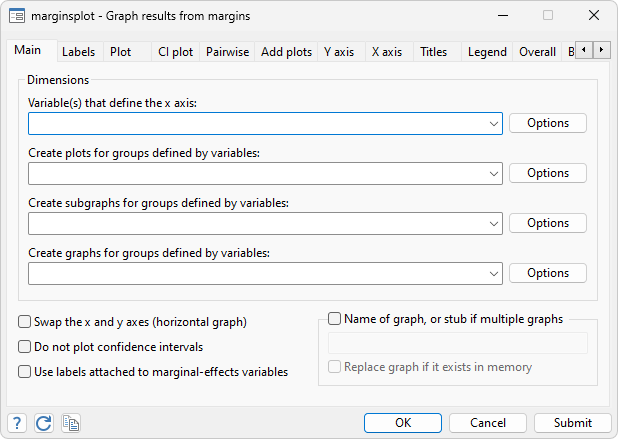


However, you should decide whether your study meets these assumptions before moving on. Since assumptions #1, #2 and #3 relate to your study design and choice of variables, they will not be tested using Stata. If any of these six assumptions are not met, you might not be able to analyze your data using a three-way ANOVA because you might not get a valid result. There are six "assumptions" that underpin the three-way ANOVA. However, before we introduce you to this procedure, you need to understand the different assumptions that your data must meet in order for a three-way ANOVA to give you a valid result.
#ANOVA STATA HOW TO#
In this "quick start" guide, we show you how to carry out a three-way ANOVA using Stata, as well as interpret and report the results from this test. As such, you want to determine if a three-way interaction effect exists between type of exercise programme, gender and body composition (i.e., the three independent variables) in explaining marathon running performance. Indeed, you suspect that the effect of the type of exercise programme on marathon running performance will depend on both your gender and body composition. However, you are concerned that the effect that each type of exercise programme has on marathon running performance might be different for males and females (i.e., depending on your gender), as well as if you are normal weight or obese (i.e., your body composition). For example, you might be interested in the effect of two different types of exercise programme (i.e., type of exercise programme) for improving marathon running performance (i.e., time to run a marathon). Furthermore, it is worth noting that the three-way ANOVA is also referred to more generally as a "factorial ANOVA" or more specifically as a "three-way between-subjects ANOVA".Ī three-way ANOVA can be used in a number of situations. Note: It is quite common for the independent variables to be called "factors" or "between-subjects factors", but we will continue to refer to them as independent variables in this guide. As such, it extends the two-way ANOVA, which is used to determine if such an interaction exists between just two independent variables (i.e., rather than three independent variables). The three-way ANOVA is used to determine if there is an interaction effect between three independent variables on a continuous dependent variable (i.e., if a three-way interaction exists).


 0 kommentar(er)
0 kommentar(er)
